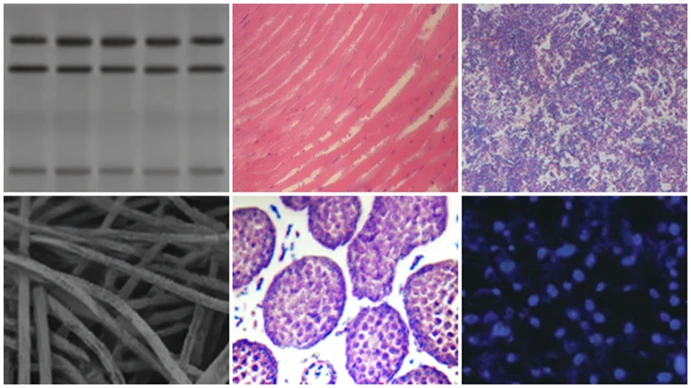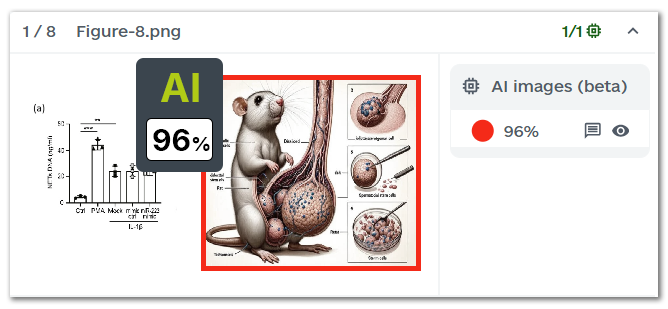We are excited to introduce a major new capability in Imagetwin: AI-generated image detection is now available. With the rapid advancements in generative models, detecting AI-generated images in research papers has become more challenging than ever. To assist you in differentiating between real and synthetic content, we have just launched a beta version for detecting AI-generated images in scientific articles.
Each paper checked by Imagetwin will now also be scanned using our AI detector for images to help researchers identify manipulated visuals. In this post, we focus on the capabilities, current progress, and roadmap for detecting AI-generated images with Imagetwin.
Detecting AI-Generated Images in Science
Existing AI detection models are not optimized for scientific images. We tested freely and commercially available APIs and observed low detection rates and high false-positive rates for domain-specific images, such as western blots and microscopic images. To address this, we trained our own detection model using images from research articles.
We generated thousands of AI images using image-to-image, text-to-image, and inpainting (a technique to modify specific parts of an image). We applied transformations like cropping, rotation, and scaling to these images during training to ensure robustness. Examples of AI-generated images used for training and testing are shown below.

Beta Version of Our AI Image Checker
While detecting AI-generated images in science remains technically challenging, this beta release offers a promising first step. The feature is an early beta version that can be disabled in your account settings. Below, we outline key areas of improvement and our roadmap for future updates.
Coverage of Generative Models
Our detection method is optimized for a widely used model for generating scientific images. However, many AI models are currently available, with new ones emerging monthly. As we expand our dataset, we are prioritizing the most common generative models to improve detection accuracy and adaptability.
Image Types
The detection model is optimized for domain-specific images commonly targeted for data manipulation, including microscopy images, western blots, histology/pathology slides, cell cultures, and spot images. It is not, however, trained to detect non-scientific photos (e.g., cats, dogs, or unicorns). Future versions will expand training to include a broader spectrum of scientific imagery, such as plots, graphs, and light photography.
Explainability
One major challenge with flagged images is distinguishing false positives from actual AI-generated content. We are actively exploring solutions to enhance explainability, making it easier to interpret flagged cases. In the meantime, consider the following checks to evaluate detected cases:
- Check for implausible visual cues, such as incomplete or nonsensical text (a common weakness in generative models).
- Review figure labels and textual descriptions for consistency.
- Consider frequency: Multiple flagged images in a paper increase the likelihood of AI-generated content.
- Verify publication dates: Images published before the rise of sophisticated generative models (pre-2022) are unlikely AI-generated.
- Consult authors for original data if uncertainty remains.
The beta release for detecting AI-generated images marks a pivotal step in strengthening research integrity. We are continuously improving our detection models and welcome your feedback as we work towards full-scale, reliable detection of AI-generated scientific imagery.
